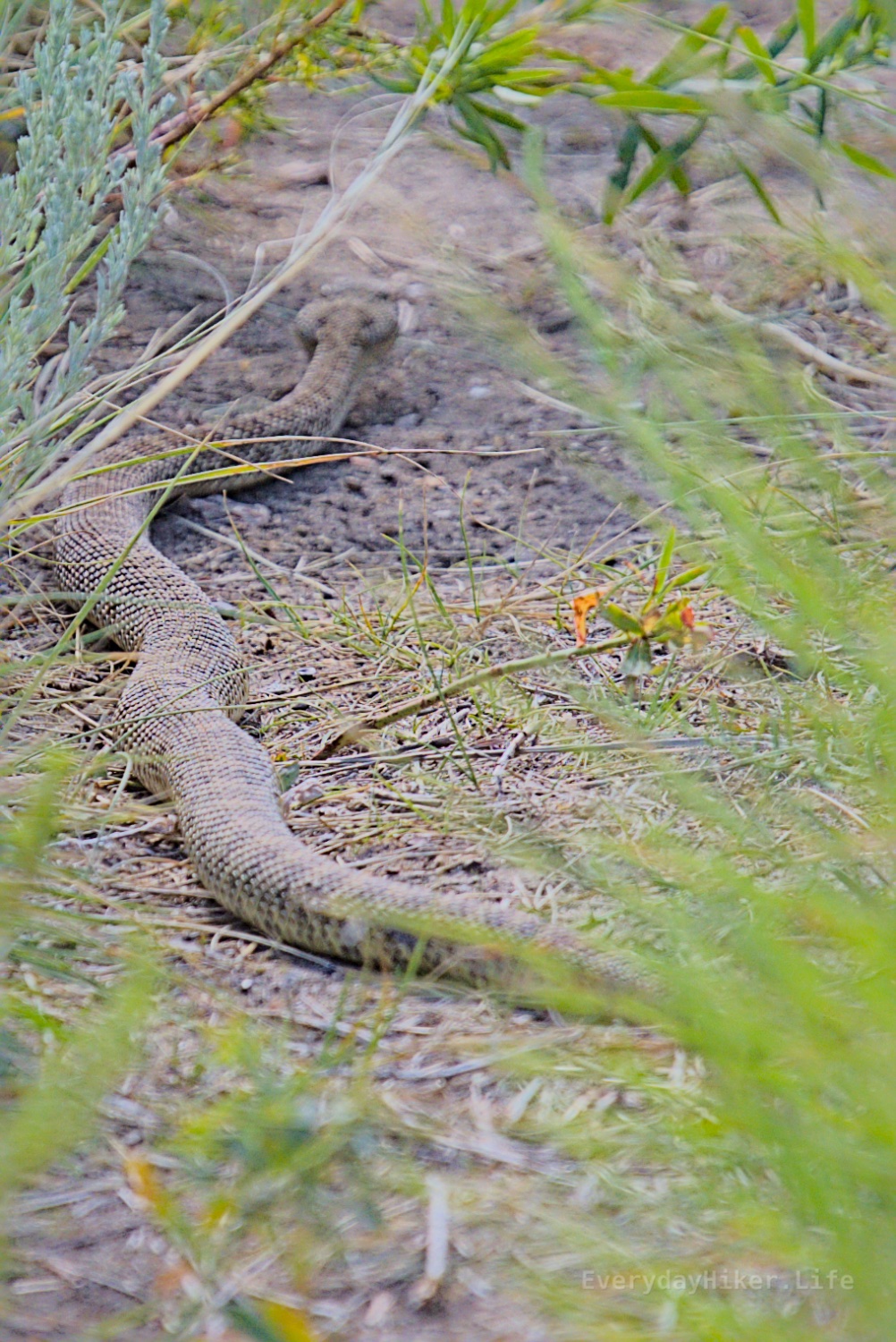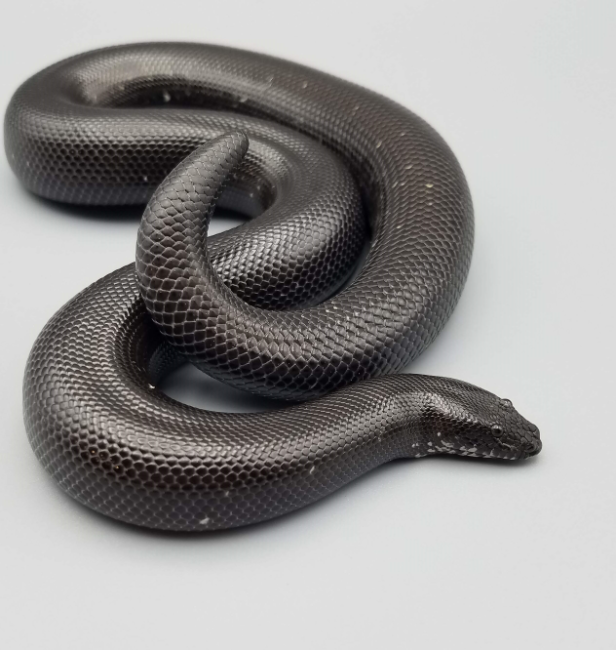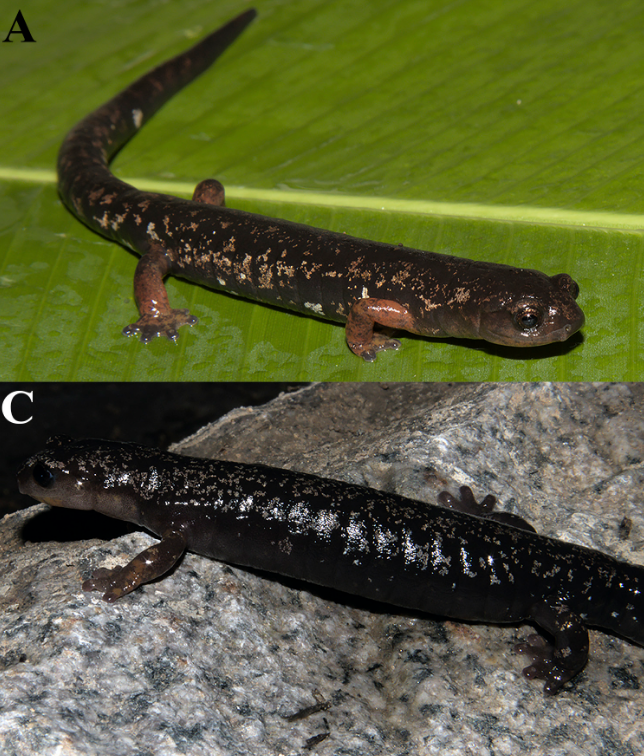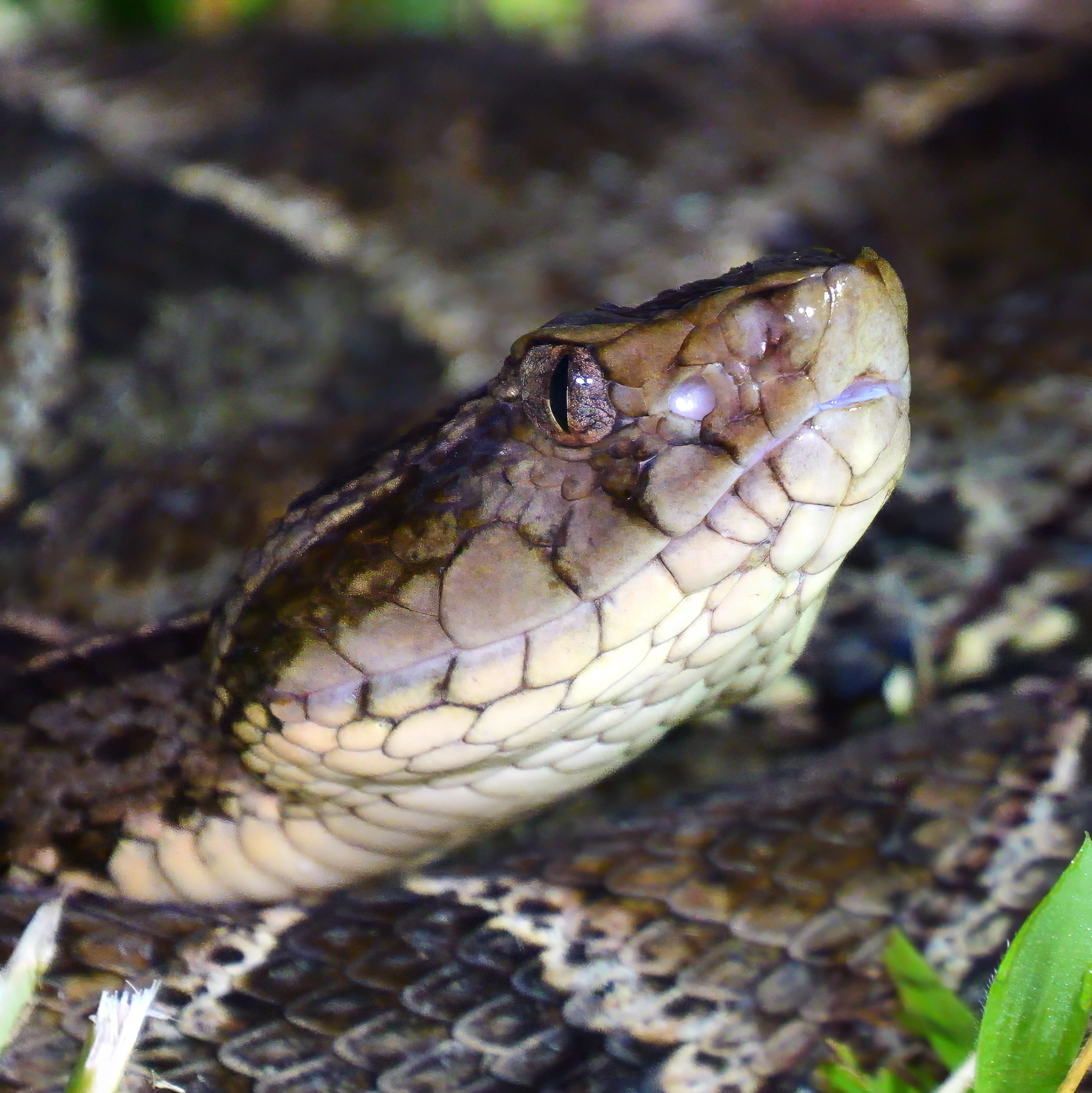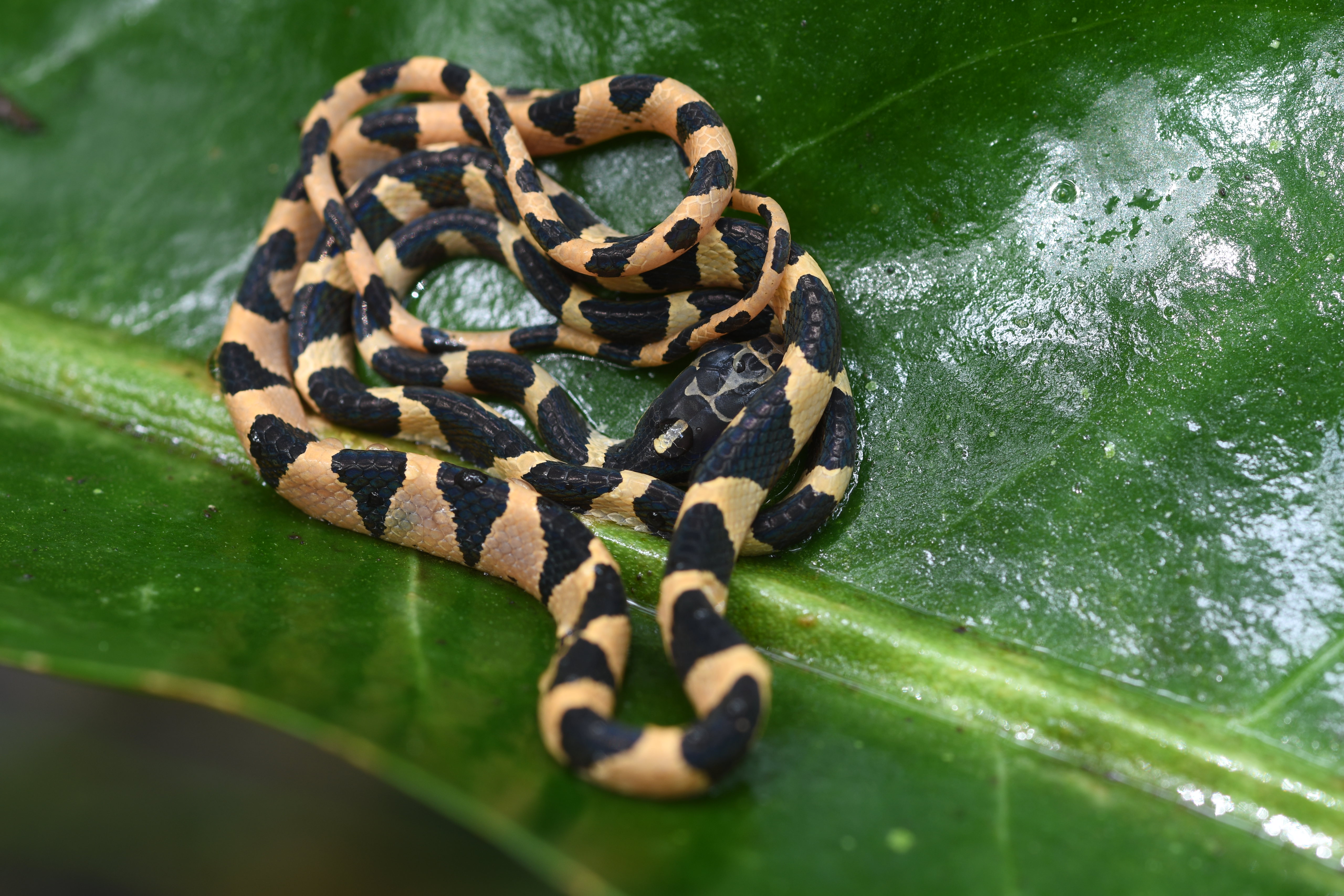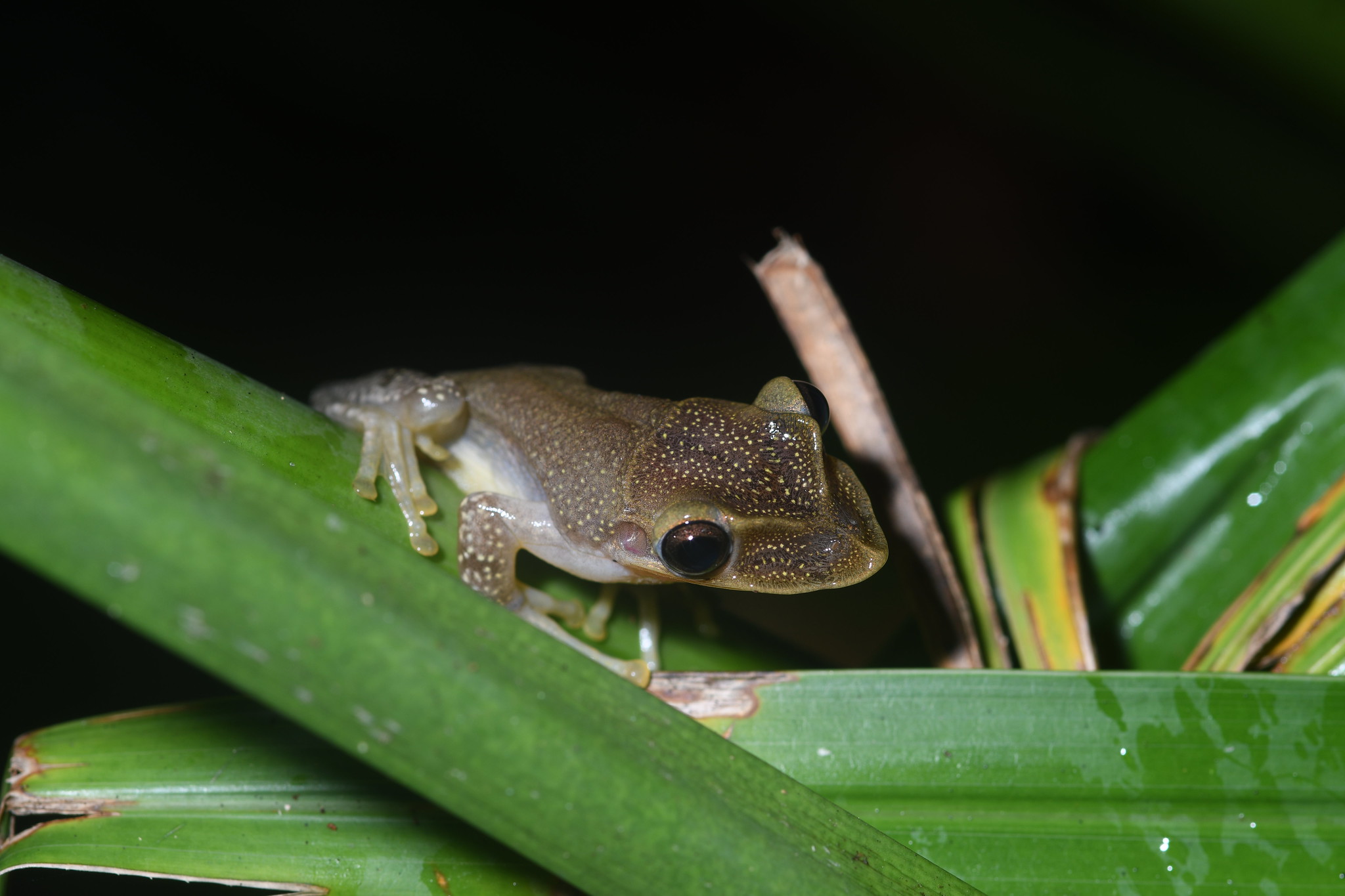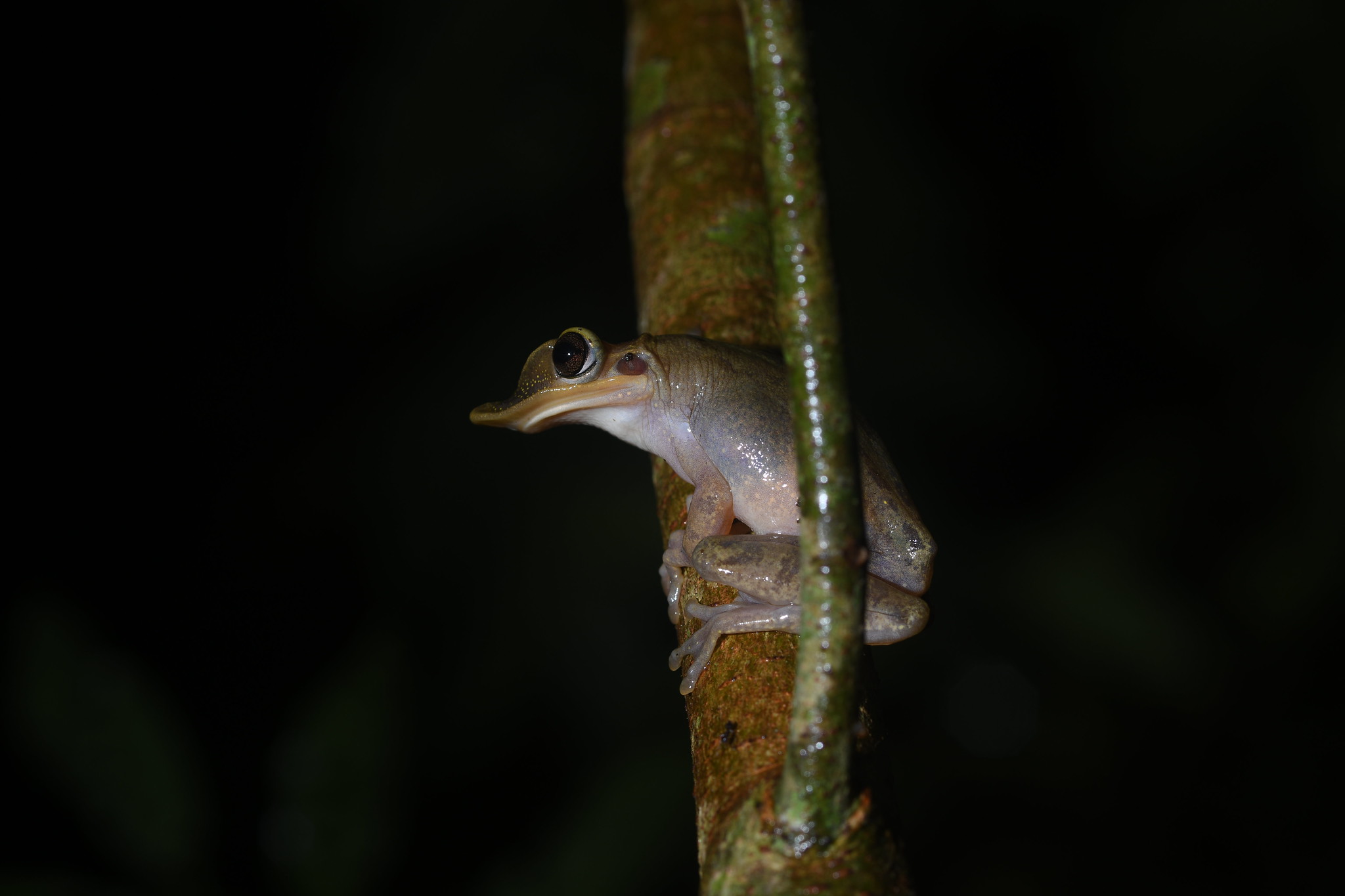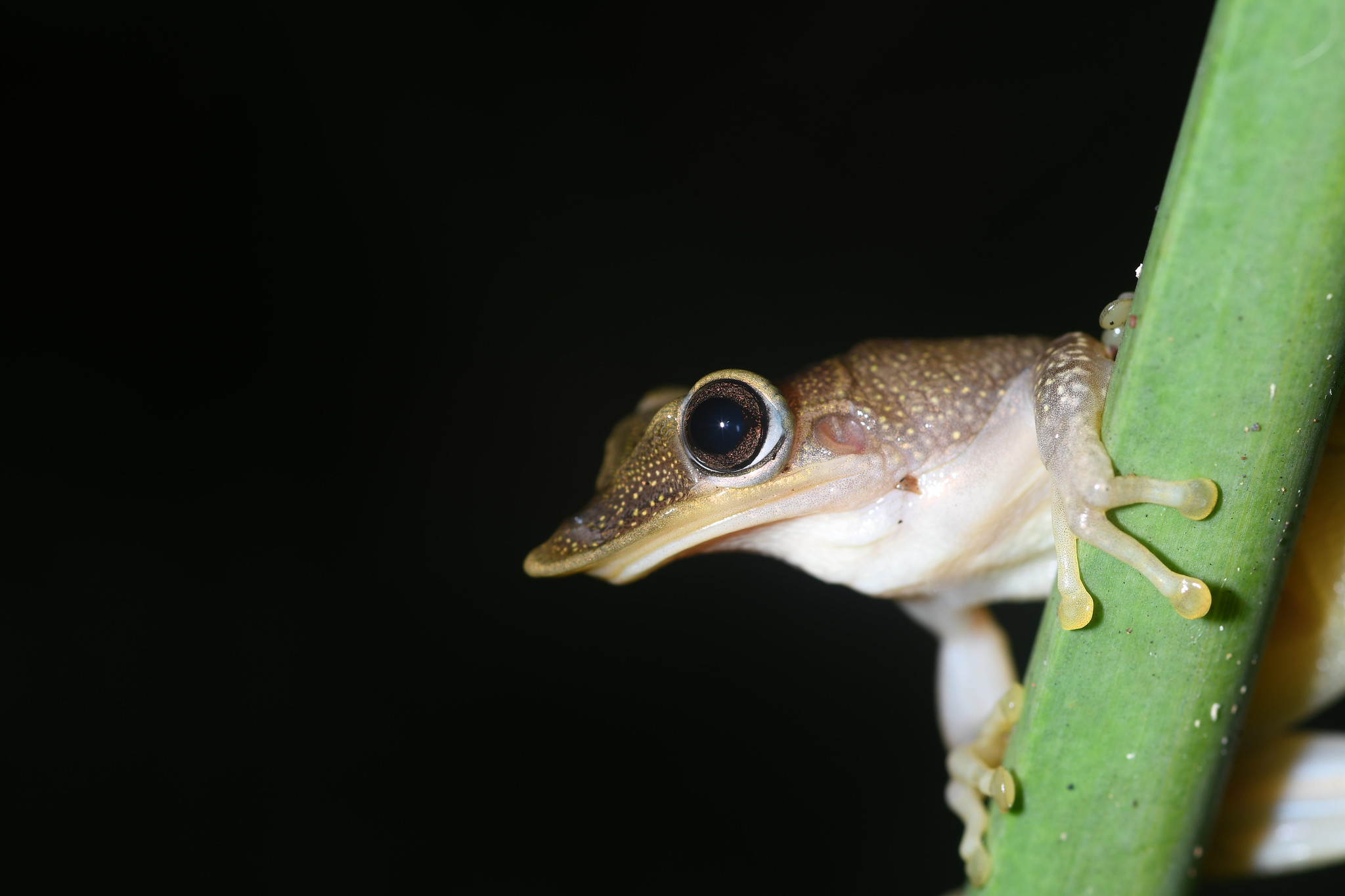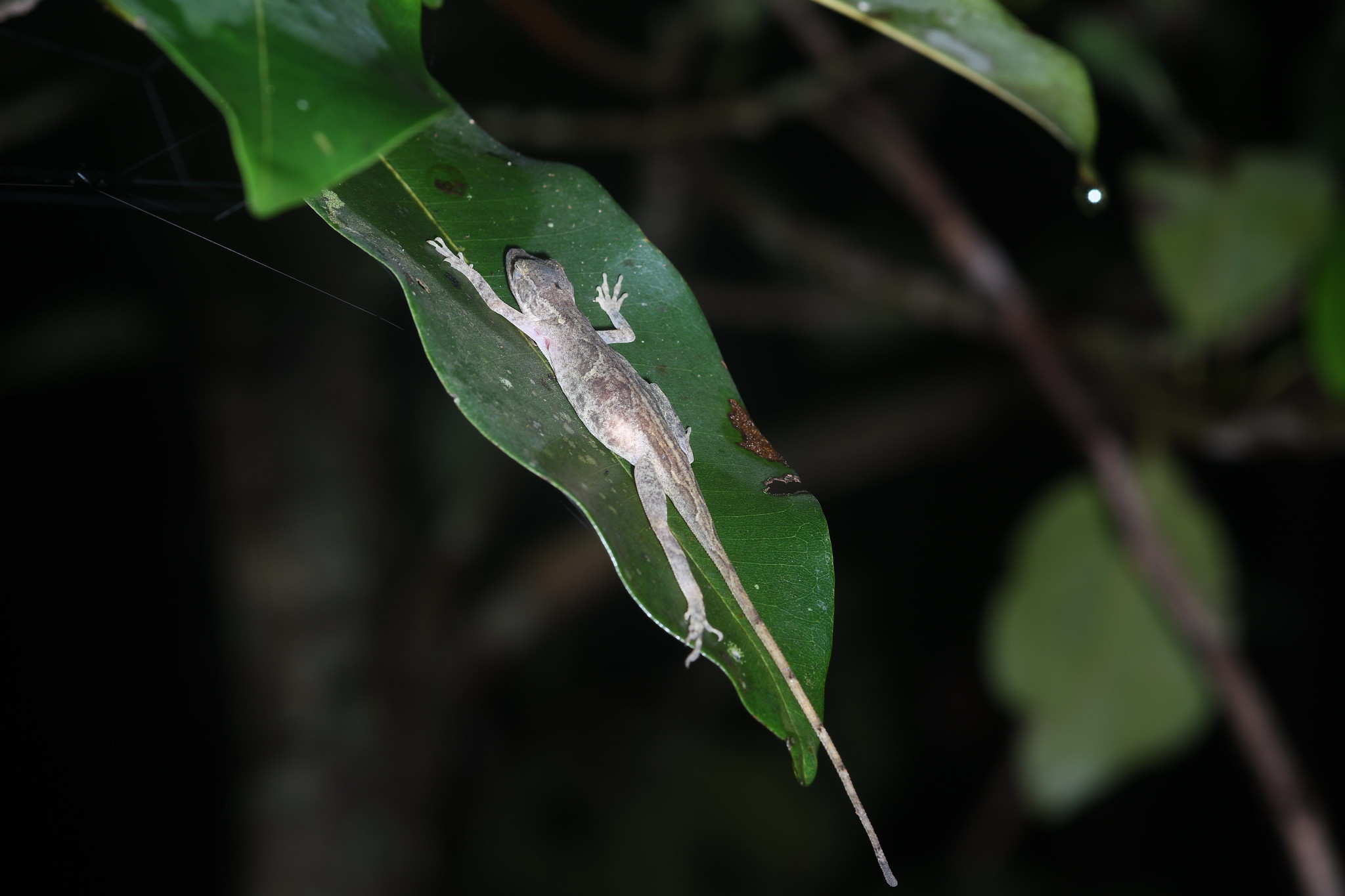Found this Imantodes cenchoa sleeping on top of a leaf in Punta Laguna, Quintana Roo.
Here is a photo of where it was sleeping:

There are a few different snakes of the genus Imantodes in Yucatán. What sets this species apart is that the row of scales on its back consists of enlarged scales. Here is a closeup emphasizing that row of scales. The green arrow points at an enlarged mid-dorsal scale, the blue arrow at a regular scale.

In comparison, here is a photo from an Imantodes tenuissimus that I took back in 2009 in Mérida, Yucatán (with a less sharp camera), and a closeup of its mid-dorsal scales that does not show this enlargement.







